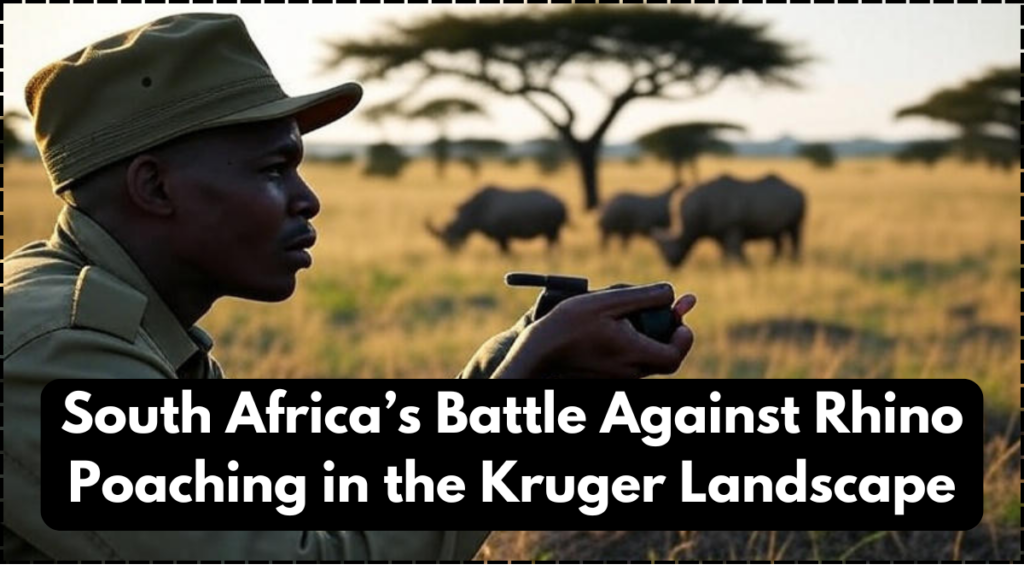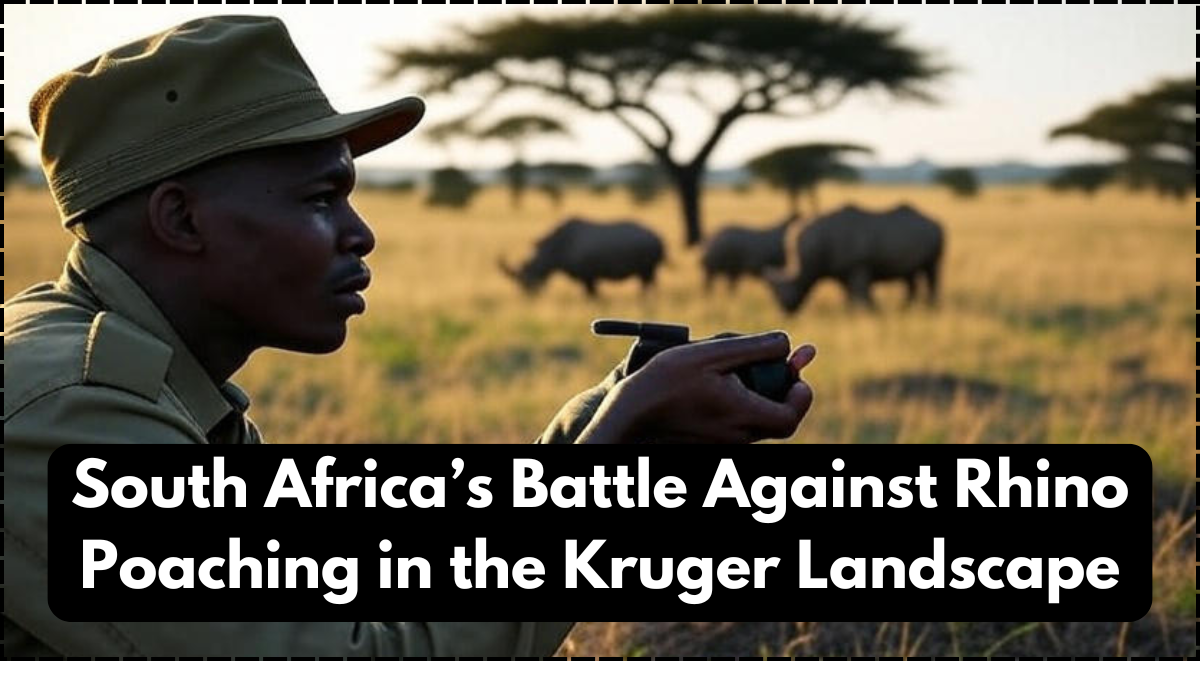The fight against rhino poaching in South Africa’s Kruger National Park has become one of the most urgent environmental challenges of our time. Poachers, driven by the lucrative global demand for rhino horns, have decimated populations of these iconic animals. Despite numerous interventions, the crisis persists, threatening not only the species but also the ecological balance of the park. As the epicenter of both illegal hunting and protective measures, Kruger reflects the larger struggle between human greed and the need for sustainable wildlife conservation.
Rhinos are more than just symbols of African wilderness; they play a crucial role in ecosystems. By shaping vegetation and supporting other species, they help maintain biodiversity. Yet, criminal networks, advanced smuggling operations, and local poverty have all fueled the ongoing wave of rhino poaching. To truly understand the challenge, we must look at the scale of the crisis, the measures taken to stop it, and how wildlife conservation can provide long-term solutions.

The Scale of Rhino Poaching in Kruger
Kruger National Park is home to the world’s largest remaining population of rhinos, making it a target for poachers. Despite intensified security, hundreds of rhinos are killed every year. Rhino horn fetches extraordinary prices on black markets, particularly in parts of Asia, where it is falsely believed to have medicinal or status-related value.
To illustrate the seriousness, here’s a comparison of rhino poaching trends in recent years:
| Year | Estimated Rhinos Poached in South Africa | Percentage from Kruger National Park |
|---|---|---|
| 2017 | 1,028 | ~65% |
| 2019 | 594 | ~55% |
| 2021 | 451 | ~50% |
| 2023 | 499 | ~55% |
These numbers show both progress and setbacks. While overall figures have declined since the early 2010s, rhino poaching remains a constant threat. Kruger, due to its vast size and porous borders, continues to be the hardest-hit region.
Conservation Strategies and Anti-Poaching Efforts
South Africa has employed a mix of strategies to combat rhino poaching, blending law enforcement with community-driven approaches. Stronger border patrols, the use of drones, and intelligence-sharing networks have made poaching riskier. Elite ranger units now track poachers with advanced technology, and harsher penalties have been introduced for wildlife crimes.
At the same time, local communities near Kruger are being engaged in wildlife conservation initiatives. Programs provide alternative livelihoods, such as eco-tourism and sustainable agriculture, reducing reliance on poaching incomes. By addressing the root causes of the problem, conservationists aim to create long-term solutions rather than short-term fixes.
Challenges in Wildlife Conservation
Despite improvements, significant challenges remain. The sophistication of poaching syndicates often outpaces government resources. Corruption and limited funding weaken enforcement, while high unemployment in rural areas creates incentives for locals to support or join illegal hunting operations.
Moreover, conservation strategies must balance protection with inclusion. Critics argue that militarized anti-poaching units sometimes alienate communities, making cooperation more difficult. To make wildlife conservation sustainable, South Africa must continue to integrate local voices into policies while also strengthening international collaborations against trafficking networks.
Global Support and the Way Forward
The battle against rhino poaching cannot be fought by South Africa alone. International cooperation is critical. Countries that are primary markets for rhino horn must enforce stricter bans and work with South Africa to dismantle trafficking routes. Global conservation organizations are also funding innovative solutions, from DNA tracking of rhino horns to advanced surveillance systems.
In the long term, fostering a culture of respect for wildlife is essential. Education, awareness campaigns, and eco-tourism all help build appreciation for the importance of rhinos in ecosystems. By combining local initiatives with global support, wildlife conservation in Kruger and beyond has a stronger chance of success.
Conclusion
The crisis of rhino poaching in Kruger National Park is a stark reminder of how vulnerable even the most iconic species can be in the face of human greed. While progress has been made, the threat remains severe. Stronger enforcement, community involvement, and global partnerships are all needed to make wildlife conservation effective. Protecting rhinos is not just about saving one species—it is about preserving ecosystems, safeguarding biodiversity, and honoring the natural heritage of South Africa for generations to come.
FAQs
Why is rhino poaching such a big problem in South Africa?
Because South Africa has the largest rhino population in the world, poachers target it for the illegal horn trade, particularly in Kruger National Park.
How does rhino poaching affect ecosystems?
Rhinos play a vital role in shaping vegetation and supporting biodiversity, so their decline disrupts the balance of ecosystems.
What role does wildlife conservation play in protecting rhinos?
Wildlife conservation initiatives combine law enforcement, community engagement, and international cooperation to safeguard rhino populations.
Can rhino poaching ever be completely stopped?
While difficult, it can be greatly reduced with strong enforcement, local participation, and global action against illegal trade networks.
Click here to learn more
Sachin is a dedicated writer specializing in education, career, and recruitment topics, delivering clear and actionable insights to empower readers.
